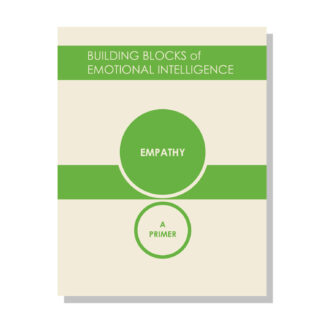
Several years ago I decided that I had enough personal baggage getting in my way to merit going to therapy. It was a wonderful and challenging experience, therapy. I had some major epiphanies about where some of my “less functional” behaviors come from. One of these behaviors—being over-critical of and micro-managing my kids—was one that I felt real motivation to change. Unfortunately, despite what felt like life-changing new awareness about my parenting behavior, I struggled to self-manage when they didn’t clear their breakfast dishes or borrowed my clothes without asking.
Therapy is just one path that leads to epiphanies about ourselves in our lives, and if we are present and aware we see these moments as real gifts. Unfortunately, those gifts often fade into the background of our lives once the sessions are over. Therein lies the hard truth about self-awareness and self-management: building new self-awareness (even rock-your-world self-awareness) does not in itself change our behavior.
It takes deliberate focus and supported skill building, informed by self-awareness, to shift ingrained, routinized, emotionally-laden behaviors.
This is the work of self-management: building the intellectual, emotional, and behavioral muscles to modulate our thoughts, emotions, and reactions to the triggers that lead to ingrained behaviors. This change doesn’t happen overnight after our big epiphanies. To truly change our behavior we must self-manage in our trigger moments, over and over and over, until we replace old, ingrained habits with new, ingrained habits. Self-management is a long-distance race. And the race is winnable!
Five Ways to Develop Self-Management
1. Do the pre-requisite self-awareness work
My coaching colleague Michele Nevarez wisely says that, “we arrive at where we aim.” Before we can effectively go after our self-limiting behaviors, we have to understand where it is we are actually aiming, or what we are really trying to self-manage. This is because emotional self-management is more about managing what causes our behaviors than the behaviors themselves. Doing self-awareness work means uncovering the triggers, emotions, and self-limiting thoughts that lead to our behaviors. Our target is to self manage at the point of trigger; before the behavior itself. We want to head off our emotional chain reaction that leads to the behavior. Some of us who are naturally self-reflective can do this work independently if we ask the right questions. Most of us will need the help of a thoughtful friend, coach, or therapist to bring these triggers, emotions, and thoughts to the surface.
2. Plan for it
Once we know what our trigger is, we can plan for it. If I know that my adolescent son will yell at his sister every time she is remotely critical of his outfit, I can plan for how I react. I can plan my response, verbatim. I can plan a logical and fair series of interventions if they escalate. I can even plan to leave the room and put on my headphones. If I can be aware enough in the moment and remember to follow my plan, then that may sometimes be enough to shift a pattern of unproductive behavior.
3. Access your power
I believe that we all have the power inside of us to not only manage our triggers but become resonant leaders in our own right. This power comes from our values and our deeply-held beliefs. We can learn how to access this power in the micro moment of our triggers to block our self-limiting emotional chain reactions and create the space for a productive path. Questions we can ask ourselves to discover that power include:
- Why do I care about this behavior or situation?
- What do I believe about what is right and true about this?
Once we identify our deeply held belief that connects to our triggering context, we can articulate a phrase or a mantra that we can access in the moment—such as “my kids will build character and social skills if I let them work this out on their own.” It will help us to practice accessing our beliefs with a partner in a simulated moment of trigger to build this muscle.

4. Cultivate your inner coach (the angel on your shoulder)
Remember the cartoons of our youth, in which a devil and an angel would appear on a character’s shoulder at a key decision-making moment? With our ingrained habits, we have an oversized devil and undersized angel on our shoulders. Cultivating our inner coach is essentially building up that angel. What can this coach say to you at your moment of trigger to remind you how you plan to manage your emotions and story? How can that coach help you remember why you care about this behavior, and what you aspire to become? If you can answer these questions in meaningful ways to yourself, and practice, then your angel/coach will likely be there for you in that split second of need.
5. Create structures for reflection and support to sustain practice over time
Again, changing ingrained emotional reactions, stories, and behaviors is a long-distance race. We have to practice over and over to rewire our brains, literally growing new neural highways and building new behavioral muscles. If we do not build structures and supports around this practice, we will likely lose focus amidst the other urgent day-to-day demands of our work and our lives. Coaches are great supports because we not only keep your eye on the ball, but help you to continue to build new awareness and self-management strategies over time. Peer coaches or “change partners” can be effective if you both truly commit to a long-term relationship and stick to an effective system of reflection, revision, recommitment, and practice. Those of us who are particularly reflective and disciplined can even do this work on our own, but even this group will need some external structures (like scheduled, sacred self-meetings) to make it happen.
With the right skill-building, supports, and self-discipline, we can build new awareness and change deeply ingrained self-limiting behaviors over time. In other words, we can become more emotionally intelligent. I can think of no better reward for a long distance race.
Recommended Reading:
 Our new series of primers focuses on the 12 Emotional and Social Intelligence Leadership Competencies, including Emotional Self-Awareness, Adaptability, Emotional Self-Control, Teamwork, and Inspirational Leadership.
Our new series of primers focuses on the 12 Emotional and Social Intelligence Leadership Competencies, including Emotional Self-Awareness, Adaptability, Emotional Self-Control, Teamwork, and Inspirational Leadership.
The primers are written by Daniel Goleman and Richard Boyatzis, co-creators of the Emotional and Social Intelligence Leadership Competency Model, along with a range of colleagues, thought-leaders, researchers, and leaders with expertise in the various competencies—including the author of this article, Matthew Taylor. See the full list of primers by topic, or get the complete collection!




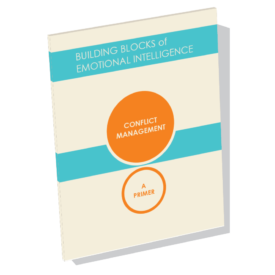


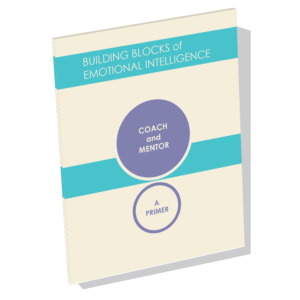


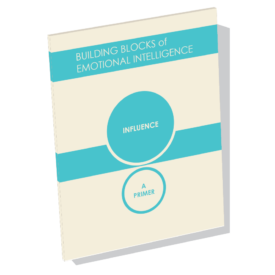


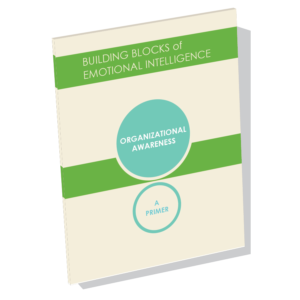 Our new primer series is written by Daniel Goleman, George Pitagorsky, and fellow thought leaders in the field of Emotional Intelligence and research. See our latest release:
Our new primer series is written by Daniel Goleman, George Pitagorsky, and fellow thought leaders in the field of Emotional Intelligence and research. See our latest release: 





